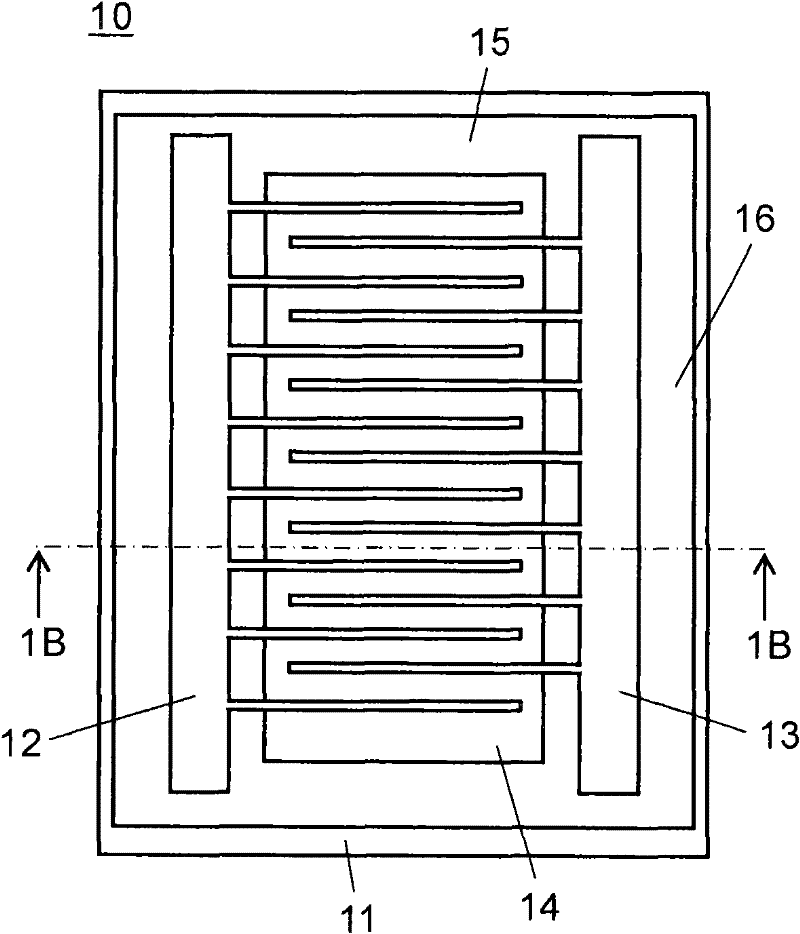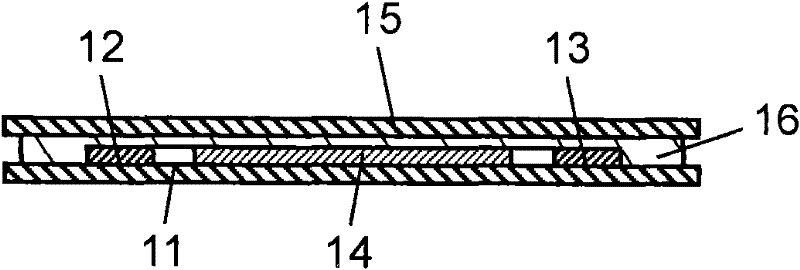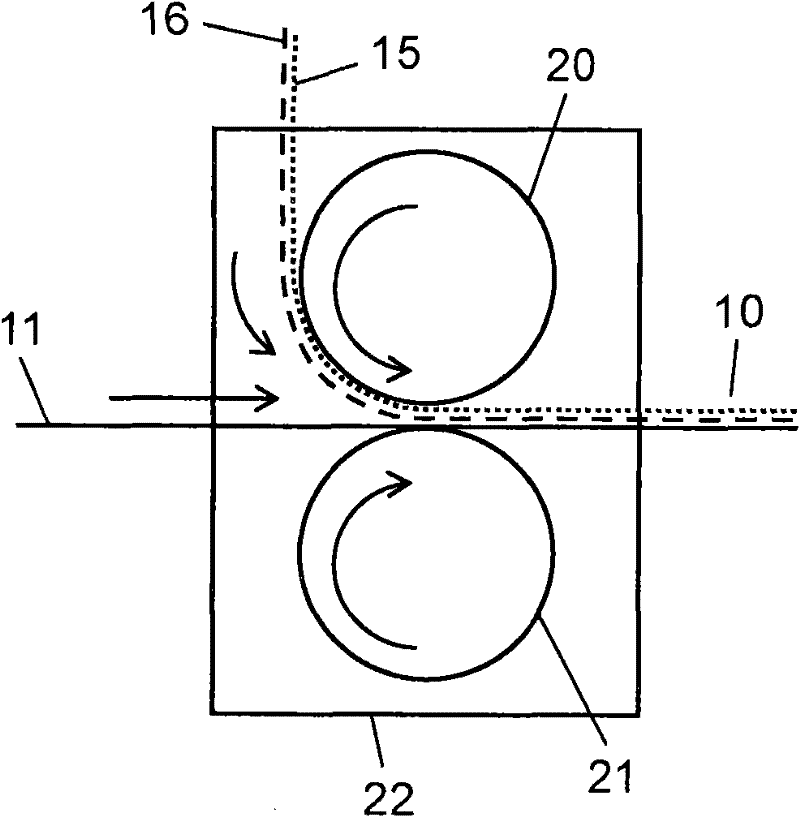ptc resistor
A resistor, PTC technology, applied in the field of sheet heating elements, can solve the problems of polymer resistors 34 being inelastic, impossible to form stably, and difficult to form into a film, etc., to achieve excellent long-term durability and reliability, high Flexibility and machinability levels, the effect of increasing manufacturing yields
- Summary
- Abstract
- Description
- Claims
- Application Information
AI Technical Summary
Problems solved by technology
Method used
Image
Examples
Embodiment 1
[0142] An example of a chip heating element using the above polymer resistor will be described below. Figure 10A It is a plan view of Embodiment 1 of the sheet heating element of the present invention, Figure 10B is taken along line 10B-10B Figure 10A A cross-sectional view of a sheet-like heating element.
[0143] The sheet heating element 100 includes an insulating substrate 101 , a first wire electrode 61A, a second wire electrode 61B, and a polymer resistor 60 . The wire electrodes 61A and 61B are sometimes collectively referred to as the wire electrodes 61 . The wire electrodes 61A, 61B are arranged bilaterally symmetrically on the insulating base 101 , and are partially sewn to the insulating base 101 with wires 102 . For example, using a T-die extruder, the polymer resistor 60 is extruded into a film on an insulating base 101 to which the wire electrode 61 has been attached and welded with a laminator. together, thereby forming an electrical contact with the wire...
Embodiment 2
[0167] Figure 12A It is a plan view of the sheet heating element 120 of Embodiment 2 of the present invention, Figure 12B is along Figure 12A A cross-sectional view taken along line 12B-12B in . This structure and the structure of embodiment 1 (referring to Figure 10A , 10B ) is that the wire electrode 121 is arranged on the insulating substrate 101 as a wave-shaped wire.
[0168] like Figure 12A As shown in , the wire electrode 121 is disposed on the insulating substrate 101 as a wave wire, and is attached through the wire 102 . According to this structure, when an external force is applied to the sheet-like heating element 120, since the wire electrodes 121 are arranged in a wavy line with an allowable leeway in length, they easily respond to tension, stretching, and bending. change shape. Therefore, the corrugated wire electrode 121 has a mechanical strength superior to that of the wire electrode 61 with respect to external force.
[0169] Furthermore, in the r...
Embodiment 3
[0171] Figure 13A It is a plan view of the sheet heating element 130 of Embodiment 3 of the present invention, Figure 13B is along Figure 13A A cross-sectional view taken along line 13B-13B in . This structure and the structure of embodiment 1 (referring to Figure 10A , 10B ) is that the auxiliary wire electrodes 131 are provided between the wire electrode pairs 61 . In other words, the auxiliary wire electrode 131 is provided between the pair of wire electrodes 61, and is sewn onto the insulating base 101 by a sewing machine using a wire 132 made of polyester fiber or the like as in the case of the wire electrode 61.
[0172] exist Figure 10A In the structure shown in , the polymer resistor 60 tends to heat unevenly between the wire electrodes 61, and the resistivity of that portion increases so that the potential is concentrated there. If this state continues, the temperature of that part of the polymer resistor 60 rises more than other parts, causing a well-known...
PUM
 Login to View More
Login to View More Abstract
Description
Claims
Application Information
 Login to View More
Login to View More - R&D
- Intellectual Property
- Life Sciences
- Materials
- Tech Scout
- Unparalleled Data Quality
- Higher Quality Content
- 60% Fewer Hallucinations
Browse by: Latest US Patents, China's latest patents, Technical Efficacy Thesaurus, Application Domain, Technology Topic, Popular Technical Reports.
© 2025 PatSnap. All rights reserved.Legal|Privacy policy|Modern Slavery Act Transparency Statement|Sitemap|About US| Contact US: help@patsnap.com



